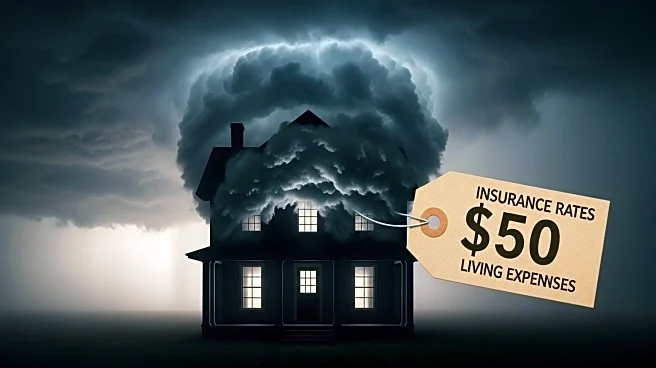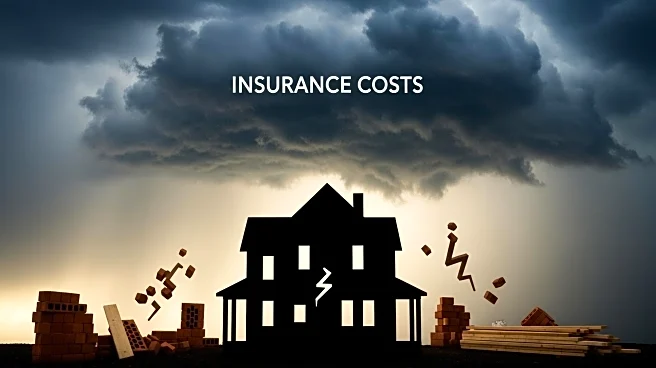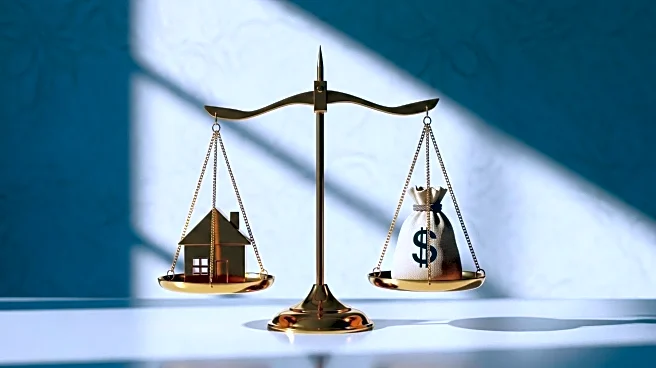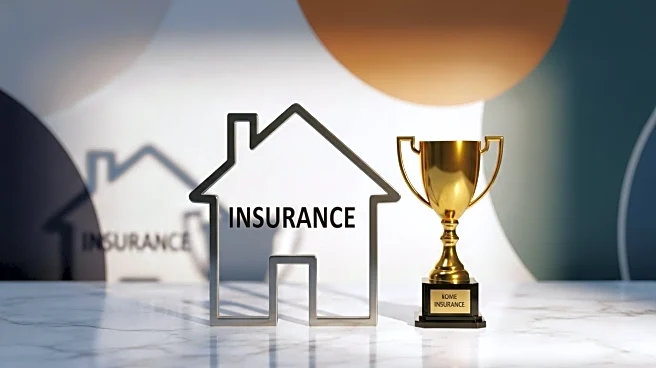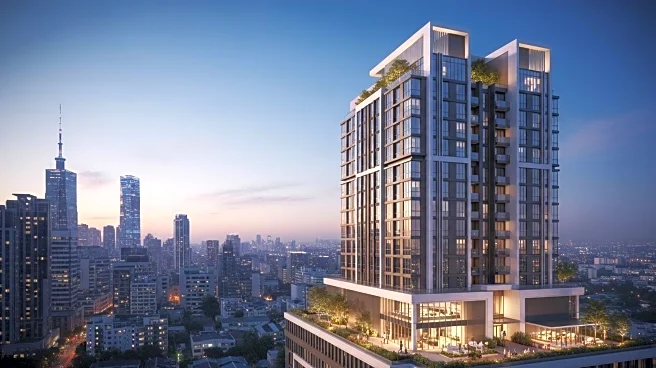What is the story about?
What's Happening?
Homeowners insurance rates across the United States have seen a significant increase, with premiums rising nearly 70% over the past five years. This surge is attributed to several factors, including climate change, the rising cost of building materials, and increasing home prices. According to a study by J.D. Power, almost half of property insurance policyholders reported premium increases over the past year, marking the highest rate of increase in over a decade. The situation is particularly acute in disaster-prone areas such as California, where premiums have risen sharply. As a result, some homeowners are considering switching insurers or foregoing insurance altogether, a risky decision that experts advise against.
Why It's Important?
The rising cost of homeowners insurance is a significant concern for many Americans, particularly those living in areas vulnerable to natural disasters. The increase in premiums reflects the growing risks associated with climate change, which is expected to continue driving costs higher. This trend could lead to more homeowners opting out of insurance, leaving them financially exposed in the event of property damage or loss. The insurance industry faces challenges in balancing risk management with affordability, and the situation underscores the need for innovative solutions to mitigate climate-related risks.
What's Next?
Homeowners may need to explore alternative strategies to manage insurance costs, such as improving property resilience to natural disasters. The insurance industry might also need to develop new products and pricing models to address the evolving risk landscape. Policymakers could play a role in supporting initiatives that enhance community resilience and reduce the impact of climate change on insurance costs.
AI Generated Content
Do you find this article useful?
